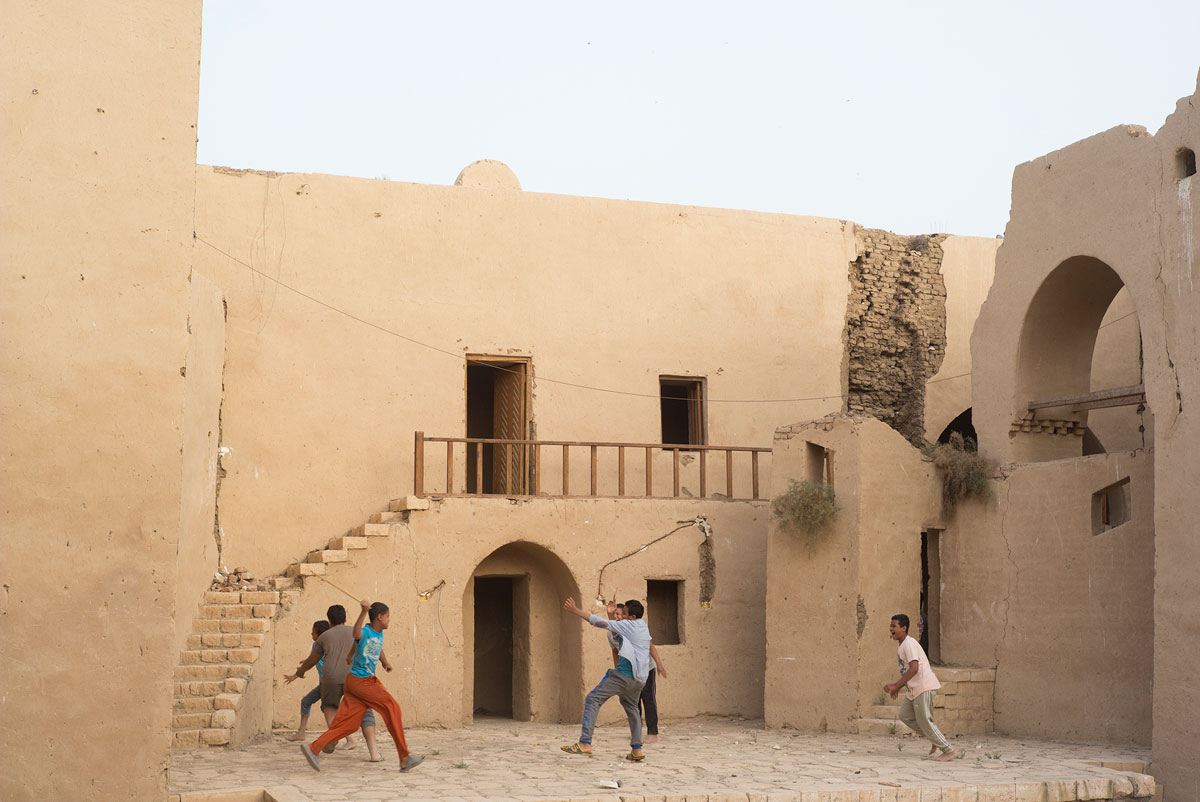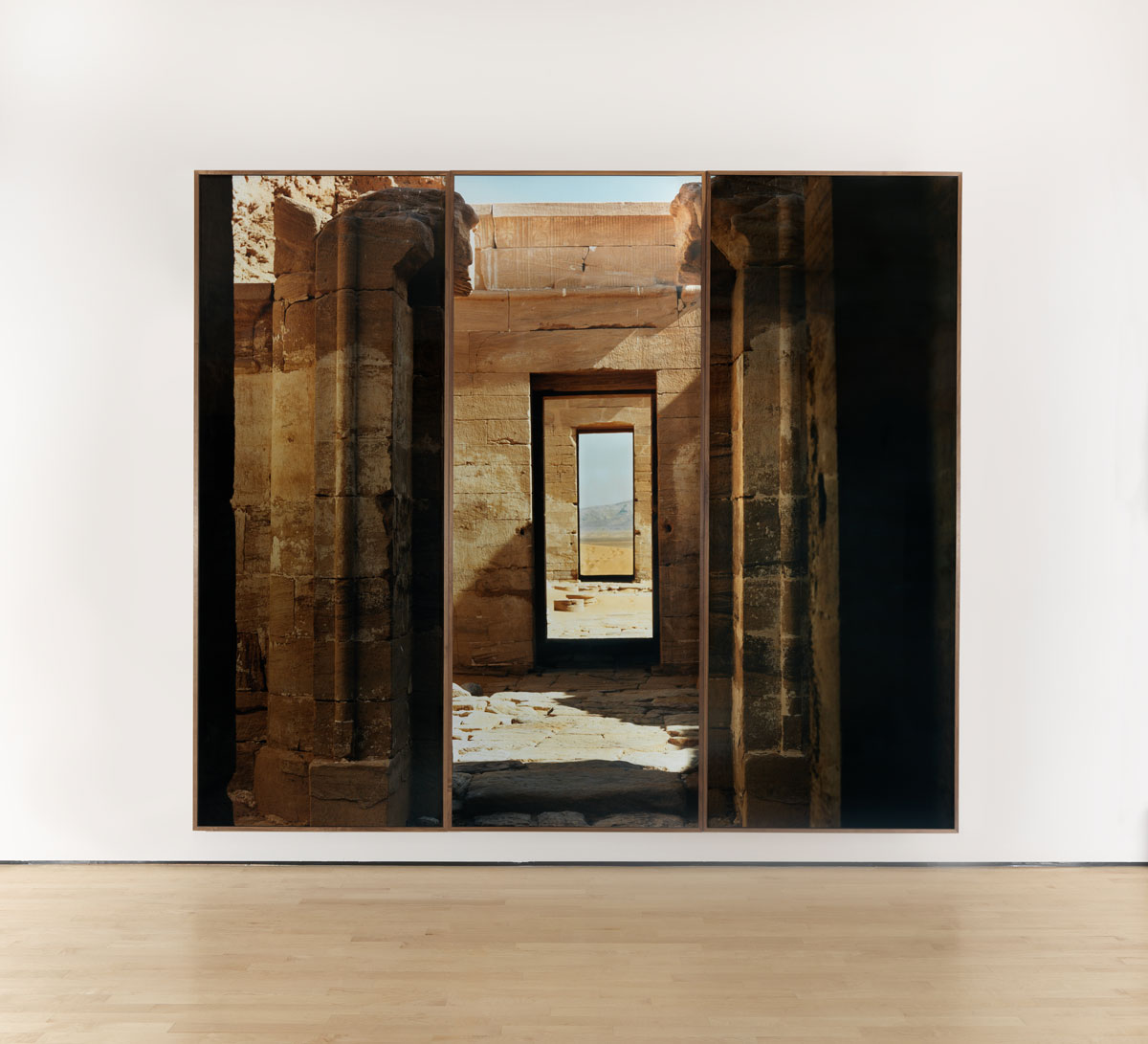When surveying the construction materials slated for a New Jersey suburb in 1967, American land artist Robert Smithson famously referred to them as “ruins in reverse,” as “buildings [that] don’t fall into ruin … but rather rise into ruin before they are built.” What Smithson postulated was not the creation of place but the negation of it through the absence of prior history.
Hannah Collins creates a similar sensation of contents without context in I Will Make Up a Song, her exhibition of photo and video works at the San Francisco Museum of Modern Art. Appropriately, she builds her ruins in reverse on the basis of historical fact.
In 1943, the Egyptian Department of Antiquities commissioned architect Hassan Fathy to build a village in the Upper Nile called New Gourna, a new home for the residents of Old Gourna. The centerpiece of Collins’ show is a single-channel video, elaborately titled I will make up a song and sing it in a theatre with the night air above my head. Playing like a revolving slideshow of images, the video chronicles the mud bricks of New Gourna and nearby New Baris as they slowly devolve back into the desert expanse from which they came.

Today, nearly 40 percent of Hassan’s New Gourna buildings are lost. UNESCO initiated a restoration project on the village that halted in 2011 (due to Arab Spring uprisings) and the remaining residents still live in poverty, a fact evident in Collins’ images. Fathy’s proposed solutions to the social problems plaguing his country never fulfilled their intended purpose of longevity. And yet, he is internationally revered for pioneering environmentally-conscious, affordable and long-lasting solutions to rural poverty.
Fathy, who died in 1989, alleged that this rural community’s poverty drove them to loot the contents of ancient tombs upon which their original city was built (hence the involvement of the Department of Antiquities). Even this short distance into the story of New Gourna, the ingenuity in Fathy’s constructions becomes suspect. By removing competition over an archeological jackpot, did Fathy incentivize a governmental commission to displace a community? Where does his lauded desire for sustainability fit in?





